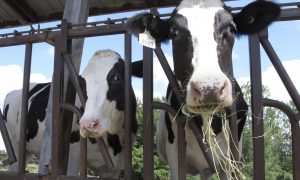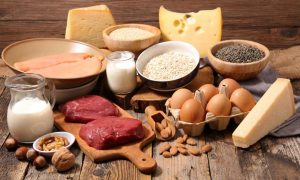
In our Indian edition, we told you how in India and Pakistan, milk was the most ordered product during the World Cup, but apart from this colorful anecdote, things are serious: world demand for dairy products is on the rise and so is their production.
India and Pakistan are leading demand and driving the increase in world dairy consumption, at the same pace as their income and population growth. Dairy is also trending in the rest of the world. In high-income countries, per capita consumption is expected to increase by 0.4% per year, mainly in the form of dairy products.
In low- and middle/low-income countries, almost all consumption is in the form of fresh products, and per capita consumption is expected to increase by 1.5% per year.
Cheese is the second most consumed dairy product in Europe and North America, and is being added to regions where it was not traditionally part of the traditional diet, such as Southeast Asia.
While some regions are self-sufficient, such as India and Pakistan, total dairy consumption in Africa, Southeast Asian countries and the Near East and North Africa is expected to increase faster than production, and this means that imports will increase.
Skim milk powder and whole milk powder are used especially in confectionery, infant formulas and bakery products. A small portion of dairy products, especially skim milk powder and whey powder, are used in animal feed.
China, which imports both skim milk powder and whey powder, will do so in greater volume over the next decade.
Whey powders are gaining prominence in nutritional supplement processing, especially in clinical, infant and senior nutrition.
The growth that is expected in almost all regions of the world comes from increasing dairy cow productivity, from optimizing production systems, improving animal health and feed efficiency, and genetic improvement.
The EU will grow more slowly than the world average, because the rate of productivity increase is slower relative to the decline in the dairy herd: 0.5% per year, versus 1% per year.
Currently, more than 10% of dairy cows are in organic systems located in Austria, Denmark, Greece, Latvia and Sweden, which by the same token yield a quarter of what conventional production does, with higher production costs.
North America has the highest average yields per cow, are mostly housed systems with feeding focused on high yields from specialized dairy herds; and as domestic demand for fats is expected to continue to be stronger, the U.S. will export mainly skim milk powder.
New Zealand produces only 2.5% of the world’s milk, but is the most export-oriented country. Its system is basically pastoral and yields are considerably lower than in North America and Europe, but they are still competitive. Land availability and increasing environmental constraints limit their growth, yet they are unlikely to turn to concentrates to feed their herds.
Production in Africa will also grow, because their herds will grow, although they will have low yields: one third of the world’s dairy cattle, producing 5.6%, so a very important part of milk production will come from goats and sheep.
Almost 30% of world milk production will be used to process dairy products. In low- and lower-middle-income countries, most milk production is used for fresh dairy products. Butter production, for example, is likely to grow slightly faster relative to total milk production, and all other dairy products at slower rates.
Only 7% of world milk production enters international markets, but in its whole and skimmed powdered versions, more than 50% of what is produced around the world is traded internationally.
Global dairy trade is gaining momentum and will expand over the next decade, reaching 14.2 MTM in 2031. But not all products will grow in the same way: 1.7% per year for SMP, 1.6% per year for cheese, 1.5% for whey powder, 1.3% for butter and 0.9% for SMP, are the projections according to the FAO Report; and most of this growth will be covered by more exports from the U.S., EU and New Zealand.
Australia, although it has lost international market share, remains a leading exporter of cheese and skim milk powder. Argentina is also a major exporter of skim milk powder, and is projected to account for 5% of world exports by 2031. In recent years, Belarus has become a major exporter, orienting its exports mainly to the Russian market due to the embargo on that country.
Milk is everywhere. It is, was and will be a fundamental part of our cultures, of our human composition. Milk and its derivatives are not only vital sources of nutrition for the global population, but also a means of subsistence for millions of people in the dairy value chain around the world.
Have you had your glass of milk today?
Dairy is good for you!























